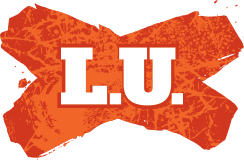Its not really that black and white with the Reds. Crowds were ok, but having to cover the away teams travel costs was a financial stab in the heart. (West Coast also had to do this for the AFL for the first year until they realised how stupid this was).
Cowboys were stung with the same stipulation.
20 YEARS IN THE SADDLE NORTH QUEENSLAND COWBOYS 1995-2014 by Neil Cadigan, details how the Cowboys got their licence and why they signed with Super League.
Here's a snippet from page 41.
"An agreement, as requested by the NSWRL after pressure from other clubs, to pay not only for the travel of the Cowboys to away games but also visiting clubs to Townsville, a prohibitive cost estimated at about $800,000 a year."
Here's some snippets from pages 44-45.
Revised applications from the three aspirating clubs (North Queensland, Brisbane and Perth) were due to be lodged by 31 October 1993, to be viewed initially by the premiership policy committee of Peter Moore (chairman, from the Canterbury club), Quayle, John Ribot (Brisbane Broncos), Bob Millward (Illawarra) Denis Fitzgerald (Parramatta), Paul Cross and Paul Harrison (both independent), before going to the directors Arthurson, Quayle, Bellew, Moore, Terry Parker (South Sydney), Laurie Doust, and independent businessmen George Gaines and Graham Lovett. With the league demanding confirmation of a lease agreement in writing by 31 October, the Cowboys had mere weeks to pull off a coup with an agreement between the Townsville and Thuringowa councils to enter a joint venture with the state government and Top End to fund and develop The Willows, finally confirming the Cowboys' ability to provide a Winfield Cup-standard stadium.
The premiership policy committee had recommended only one of the three teams be admitted to join the Warriors, even though all applications passed their inspection. On 30 November, the board met and the media gathered outside the league's headquarters at 61 Phillip Street, Sydney, waiting for word. After each had provided their final presentations, seated throughout the bars downstairs waiting for one of the game's most momentous decisions were Boustead, McLean and mayor of Townsville Tony Mooney; Crushers chairman Dick Turner; and Perth Pumas chairman Laurie Puddy and CEO-elect Gordon Allen.
The Crushers were the media favourites, the Cowboys ranked outsiders and the Pumas the wild card, with it known that the television rights holder, Kerry Packer's Channel 9, was keen to exploit the extra TV programming the west coast time zone would provide.
No one outside the meeting room that day had any inkling about what would happen next: all three teams were admitted, giving the game a 20-team competition. It was a massive shock.
Quayle provides an insight into what occurred. "Ken rang me early the morning the board was going to make a decision and he said, 'Mate, would there be any reason why we couldn't go now with four teams rather than two? Would they be ready now?' I'd suggested to him that plans were always to go to 20 teams over a period of time, but the premiership policy committee had said to admit two and in two years' time we'd look at it again. I said as far as I'm concerned there's no problem in bringing forward that decision. We'd looked at all three applications, and you couldn't split them as far as enthusiasm and the main issues. Perth wasn't a league area but we were looking to the future and had just started to play some games in Perth with good results. We knew what Brisbane was like, we were wary about New Zealand but had admitted them on the strength of their application; we'd made the decision we wanted to expand for television and exposure of the game in New Zealand.
"It was a unanimous decision to admit all three. It was the end of the Winfield sponsorship, but we were in the throes of good television revenue, we knew Channel 9 would support Perth. Initially, we were favouring Auckland and the Crushers and not Perth and North Queensland. It was a very big decision for the league, and a very big decision for North Queensland."
